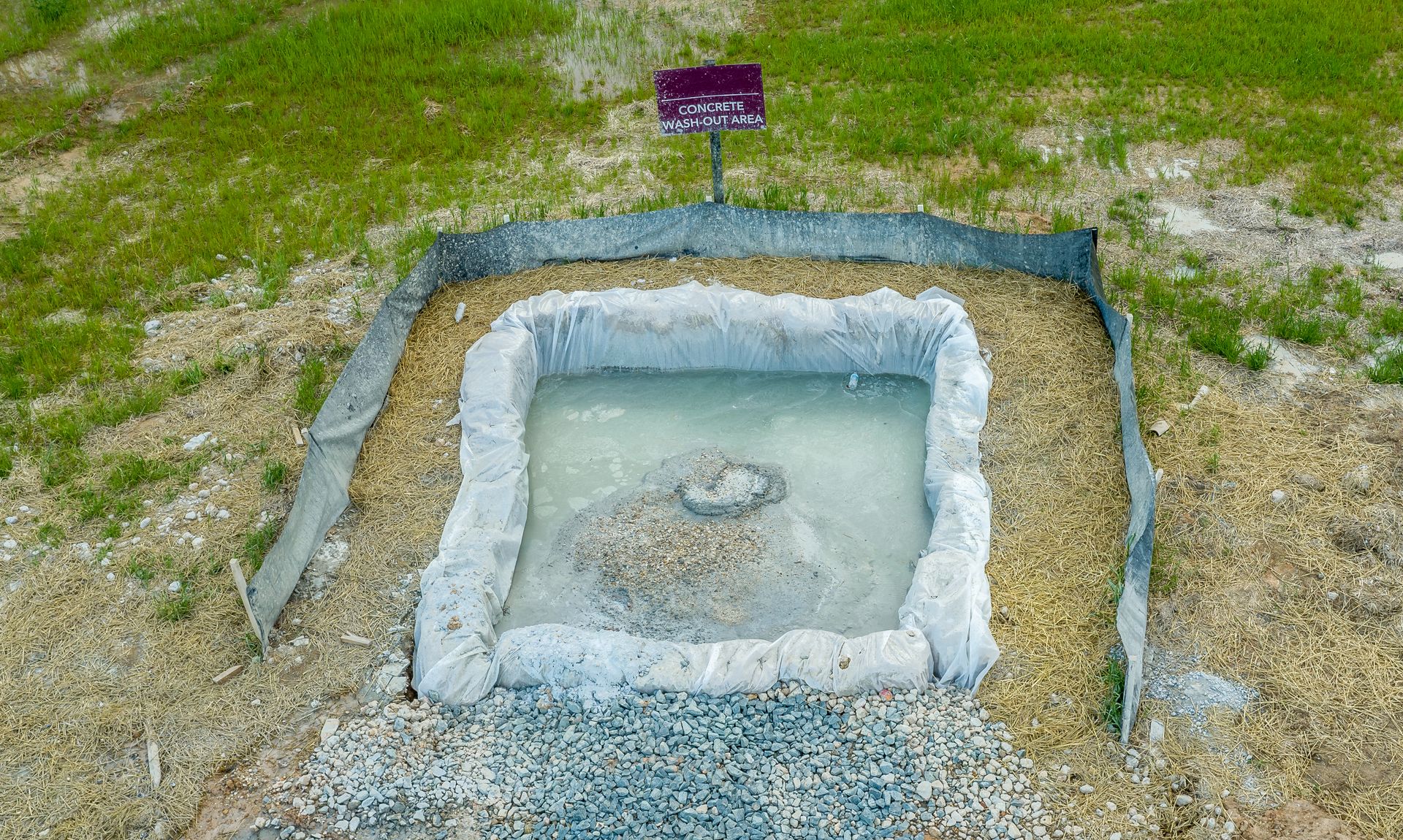Cement and concrete are ubiquitous building materials used in virtually every construction and land development project in the United States.
However, concrete and cement tend to generate significant waste, from resource extraction to carbon dioxide release.
One of the primary causes of concern for the EPA and many states has been what to do with leftover concrete waste that site operators wash away to prevent the materials from hardening. This toxic slurry is known to be harmful to aquatic life and nearby soil, which is why it’s essential that site managers exercise proper precautions and follow necessary best management practices (BMPs) when handling concrete washouts.
This article will describe the role of concrete washouts in construction zones and different best management practices for handling and disposing of concrete washouts.
What Is a Concrete Washout?
Concrete washouts are performed at the end of each work day to prevent concrete from hardening inside the trucks, wheelbarrows, and chutes that handle concrete. Usually, water is injected into chutes and tools to remove the concrete mixture, with the resulting mess being placed inside a special bin for disposal.
The Importance of Concrete Washouts in Stormwater Management
Concrete washouts help protect valuable construction equipment from damage and allow site managers to properly dispose of any excess mixture.
However, if the concrete washout slurry is dumped on the ground or mixed with stormwater runoff, it can cause grave environmental damage. Therefore, proper concrete washout handling is essential for several reasons:
- Protects local ecosystems: Concrete and cement are highly alkaline mixtures that can raise any water source they come in contact with to dangerous pH levels. Rain water polluted with concrete washwater can percolate down through the soil and alter the soil chemistry, inhibit plant growth, and contaminate the groundwater.
- Protects local infrastructure: Concrete washouts can easily be washed away to nearby, adjoining roads and buildings, where they can harden or damage local infrastructure.
- Reduces risk of flooding: The heavy materials found in the concrete slurry can block storm inlet drains and prevent stormwater runoff from properly discharging.
- Keeps construction sites safe: Proper disposal of concrete washout materials will help keep the grounds of your construction site free of any leftover materials that can be a tripping hazard.
- Ensures local compliance: Proper concrete washout management will ensure that you comply with local, state, and federal regulations.
Types of Concrete Washout Containers
Since concrete tends to harden very quickly, most construction companies prefer to perform concrete workouts on-site at the end of each use day.
Different types of washout containers are available for collecting, retaining, and recycling concrete wash water and solids from washing down mixed truck chutes and pump truck hoppers at construction sites. Selecting the right one depends on your budget and usage.
- Hay bale and plastic washout pit: An economical and temporary solution, typically used for small to medium-sized projects. It consists of hay bales lined with plastic to create a containment area for wash water and solids.
- Vinyl washout container: A flexible and reusable option, ideal for medium to large projects. It is lightweight, easy to set up, and can be moved around the site as needed.
- Metal washout container: A durable and long-lasting option, suitable for large projects or repeated use. These containers are sturdy, can hold large volumes of wash water and solids, and are often equipped with lids to prevent spillage.
- Chute washout bag or box: A compact and portable option, perfect for small projects or for use in confined spaces. These bags or boxes are designed to attach directly to the chute, capturing wash water and solids efficiently.
Concrete Washout Best Management Practices
To avoid incidental exposure of concrete wastewater with stormwater runoff, it’s important to follow the best management practices laid out below:
- Collect and retain all the concrete washout water and solids in leak-proof containers so that caustic materials do not reach the soil surface and then migrate to surface waters or into the groundwater.
- Recycle 100 percent of the collected concrete washout water and solids. This offers a range of additional benefits, including reducing the need to extract more materials to create additional concrete.
- Inspect concrete washout facilities daily and after heavy rains for leaks and any damage to plastic linings and sidewalls.
- Vacuum all wash water out of the container once it has been filled to 75 percent of its capacity to avoid overflows.
- Cover containers before and during heavy rains to prevent overflows.
Naturally, these BMPs will be incorporated into your stormwater management plan and communicated to all staff to ensure that these procedures are followed.
Frequently Asked Questions
Can concrete washout water be recycled?
Yes, concrete washout water can be recycled. The water can be treated and reused in the concrete mixing process, reducing the demand for fresh water and minimizing environmental impact.
How do you set up a concrete washout area?
To set up a concrete washout area:
- Choose a suitable location away from water sources and drainage systems.
- Set up the containment system (e.g., hay bales lined with plastic, vinyl container, metal container).
- Ensure the area is properly marked and accessible for concrete trucks and equipment.
- Regularly monitor and maintain the washout area to prevent overflow and ensure proper containment.
How do you dispose of concrete washout material?
Concrete washout material can be disposed of by:
- Allowing the wash water to evaporate, leaving the solid residue behind.
- Breaking down the dried solids and disposing of them in a landfill or recycling facility.
- Using a licensed waste disposal service to handle and dispose of the washout material according to local regulations.

